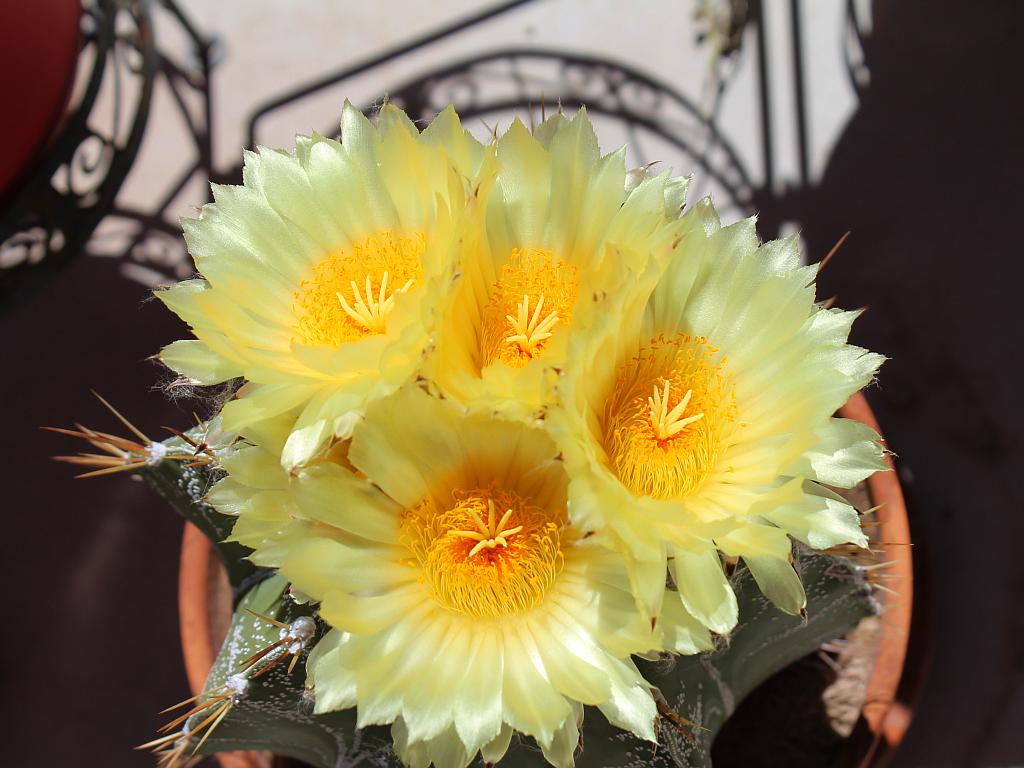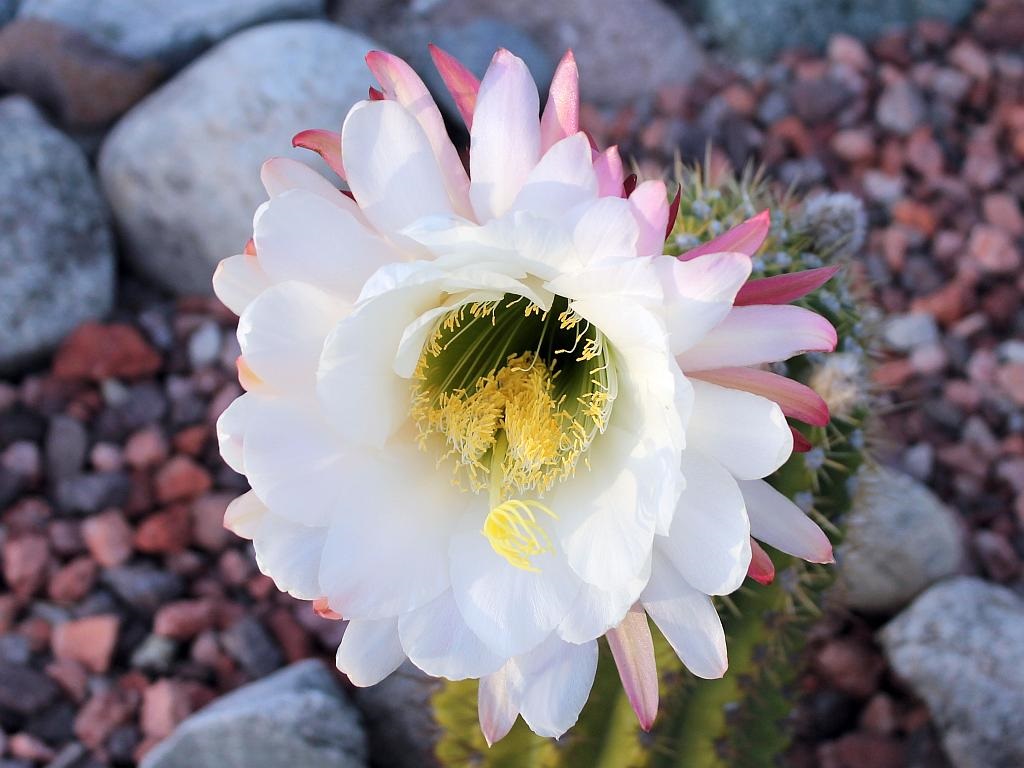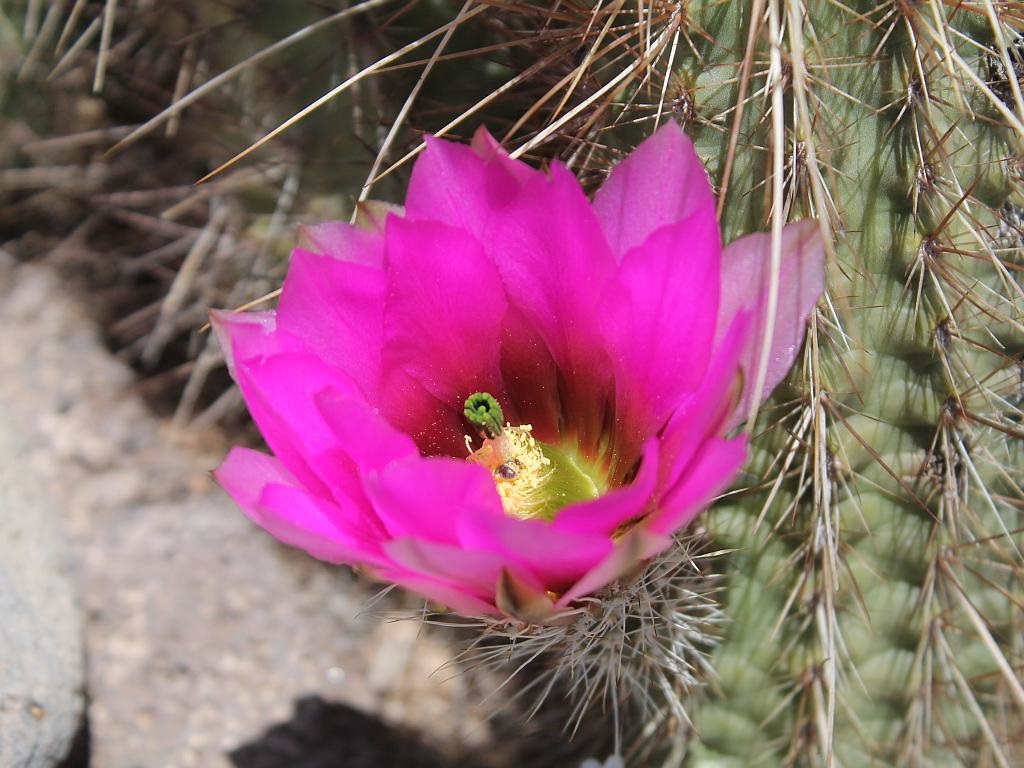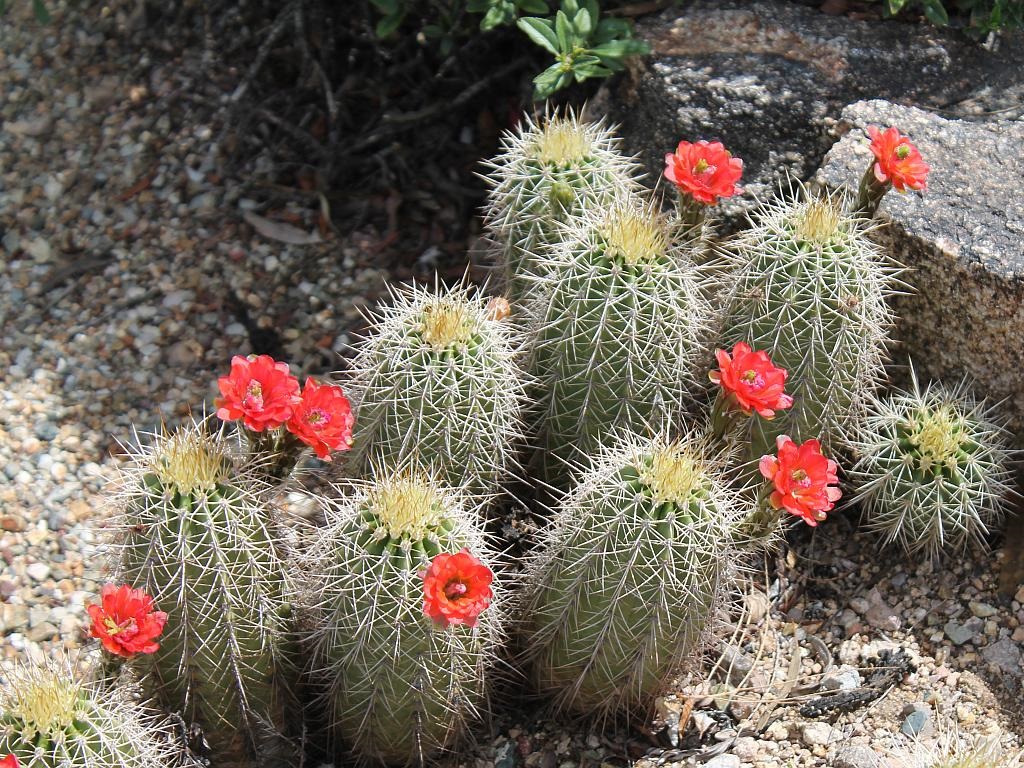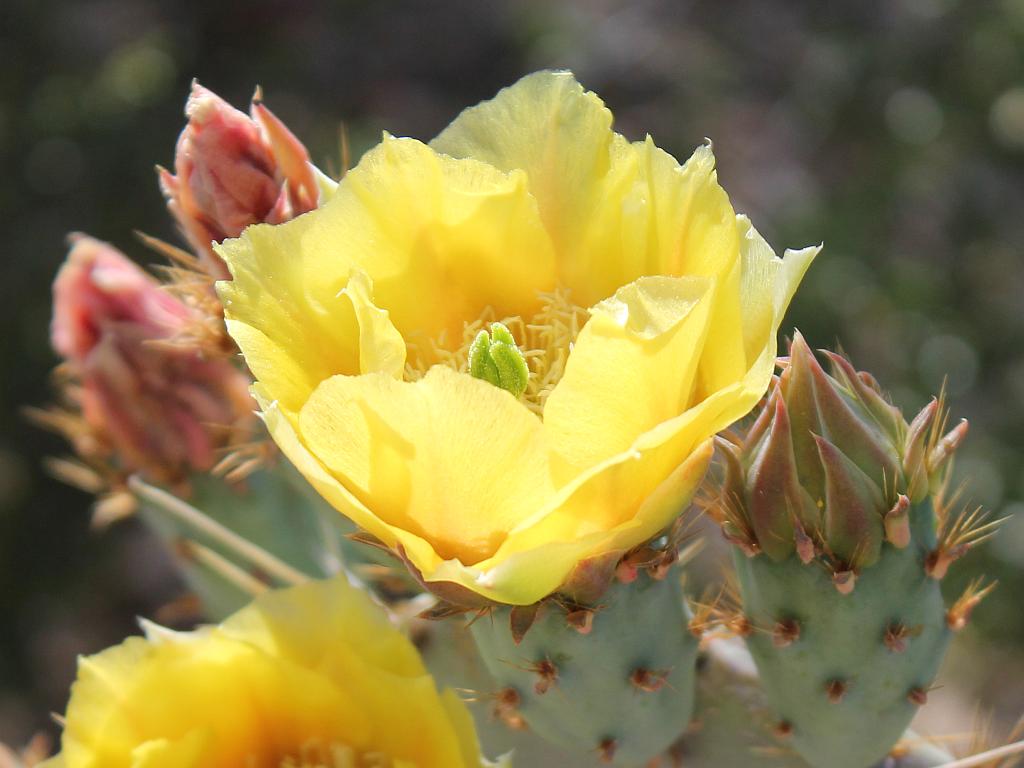
As springtime progresses, more flowers open up. We have several types of opuntia (prickly pear) cactus in the rock and cactus garden west of the house. The first flowers to open are on the beavertail cactus which have pink flowers. Now the other opuntia are starting to show their yellow flowers.
Most of the cacti in the garden were started from a single paddle while a couple are native to that patch of ground and a couple others are transplants. The cactus whose flower appears above is a hybrid in that it was started elsewhere from a paddle and has been transplanted to its current location a couple of years ago when we were preparing to have the RV drive concrete poured.
All of the opuntia out in the west side lot are thriving. None meed much attention although we did trim up one of the lawyer’s tongue cactus which was spreading too wide with several paddles laying on the ground. That cactus, and a couple of other offshoots elsewhere out there were started from a single paddle that we planted in a barrel in the courtyard before relocating.
The best part of a cactus garden is that it does well if you ignore it. We do, however, drizzle some water on a couple of ocotillos from time to time. One of the transplanted ocotillos is doing very well this spring, with leaves and some cane-tip flowers.



